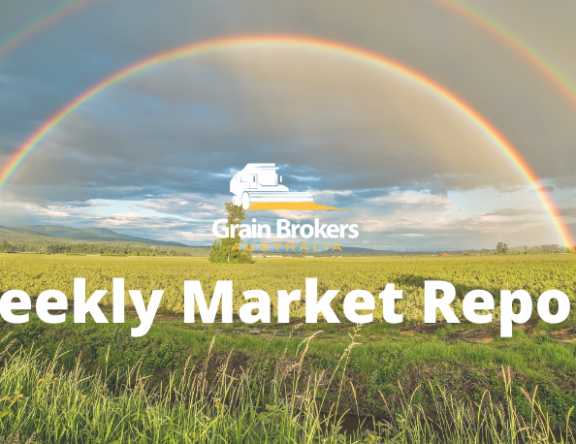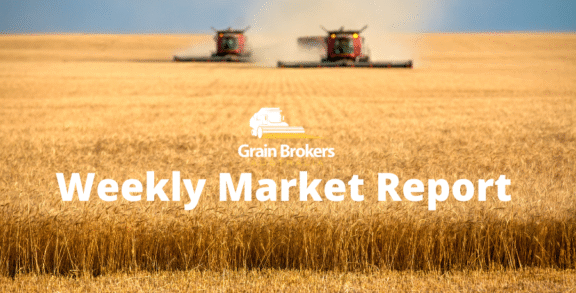
The European Commission updated its 2023/24 grain production numbers for its 27 member states last week with soft wheat output increased slightly compared to the September forecast, as were the rapeseed and corn production outlooks, but the barley number was trimmed on the back of some disappointing late season yields.
The total soft wheat harvest across the European Union came in at 125.5 million metric tonne, up from 125.3MMT in last month’s update, off 21.75 million hectares for an average yield of 5.77 metric tonne per hectare. This is down from 125.8MMT off 21.93 million hectares and an average yield of 5.74MT/ha in the previous season but is higher than the five-year average of 124.3MMT off 21.67 million hectares and an average yield of 5.79MT/ha.
Europe’s biggest wheat producer is France, and the European Commission pegged this season’s soft wheat crop at 34.9MMT off 4.75 million hectares, 4.3 per cent higher than the 34.3MMT harvested in 2022/23 and 2.2 per cent higher than the five-year average of 34.1MMT. This season’s average yield of 7.33MT/ha is 3.1 per cent higher year-on-year and 4.4 per cent higher than the five-year average.
Germany fills second place on the EU’s soft wheat production podium with 21.2MMT off 2.84 million hectares, compared to 22.2MMT off 2.94 million hectares in 2022/23 and a five-year average of 21.7MMT. Wet weather during harvest was a big issue for the German farmer this year, with lower protein and a higher-than-normal proportion of feed quality wheat grades the result. Germany’s soft wheat yield of 7.45MT/ha this season is 1.4 per cent lower than last year’s harvest but 1.2 per cent higher than the average of the previous five seasons.
Third place goes to Poland with 12.65MMT off 2.43 million hectares and an average yield of 5.21MT/ha. Final production is 5.2 per cent lower than last season’s crop of 13.3MMT but 6.6 per cent higher than the country’s five-year average of 11.9MMT. Just missing the podium was Romania, producing a record 10.5MMT of soft wheat this year off 2.23 million hectares for an average yield of 4.69MT/ha.
Three other EU countries, Bulgaria, Hungary and the Czech Republic, expect to have final soft wheat production in excess of 5MMT this year. That cohort would usually include Spain, but a devastating season-long drought slashed this season’s output to just 55 per cent of the country’s five-year average.
Total barley production for the EU-27 came in at 47.5MMT, compared to the September estimate of 48.4MMT, and the lowest since 2010. This is down 7.7 per cent from 51.5MMT last season and 9.2 per cent lower than the five-year average of 52.3MMT. The harvested area of 10.33 million hectares is on par with the previous season but is 4.5 per cent lower than the five-year average of 10.82 million hectares. This year’s yield was 4.6MT/ha, down from 5MT/ha last season and the five-year average of 4.94MT/ha.
The EU’s three big barley producers are France, Germany and Spain, traditionally accounting for more than 60 per cent of the bloc’s annual barley output. This year’s French crop came in at 12.1MMT, off 1.8 million hectares and an average yield of 6.82MT/ha. This compares to last year’s figures of 11.3MMT, 1.87 million hectares, respectively, and 6.07MT/ha, and the five-year average figures of 13MMT, 1.84 million hectares and 7.06MT/ha.
Germany was traditionally the EU’s biggest barley producer, but the pendulum has swung in favour of France since 2008, with Germany stealing back the gong on just three occasions since. This year’s German barley crop is estimated at 11MMT, fractionally lower than last year but down 4.3 per cent from the five-year average of 11.5MMT.
This season’s Spanish barley crop was hit particularly hard by the regional drought and has historically been highly variable. The 2023/24 crop has produced 4MMT, off 2.36 million hectares and an average yield of 1.71MT/ha. Last season the crop was 6.6MMT with an average yield of 2.78MT/ha against the average of the previous five seasons of 6.9MMT and a yield of 2.56MT/ha. In the 2020/21 season, Spain produced a bin buster of 10.9MMT, which ended up being bigger than that season’s barley crops in both Germany and France.
Rapeseed is by far the biggest oilseed crop grown in the EU-27, accounting for around 60 per cent of total output. This year’s crop is forecast at 19.8MMT, up marginally from 19.6MMT last season but 14.6 per cent higher than the average since 2018/19 of 17.3MMT. This year’s harvested area of 6.2 million hectares was up 5.2 per cent from 5.89 million hectares in 2022/23 and 12.4 per cent higher than the five-year average of 5.51 million hectares. The average yield of 3.19MT/ha is lower than last year’s 3.32MT/ha but higher than the five-year average of 3.12MT/ha.
France and Germany regularly alternate as the EU-27’s biggest Rapeseed producer, with France getting the prize in 2023/24. Production, harvested area, and yield for France this season, last season, and the five-year average are 4.3MMT, 1.35 million hectares, 3.17MT/ha; 4.5MMT, 1.23 million hectares, 3.67MT/ha; and 3.8MMT, 1.15 million hectares, 3.29MT/ha, respectively. The German numbers in the same order are 4.2MMT, 1.17 million hectares, 3.63MT/ha; 4.3MMT, 1.09 million hectares, 3.95MT/ha; 3.6MMT, 10.2 million hectares and 3.51MT/ha.
The main summer crop across the EU-27 is corn, with this year’s harvest still progressing in many regions. With a harvested area of 8.47 million hectares and an average yield of 7.07MT/ha, the crop is expected to be 59.9MMT. Last year’s harvested area was higher at 8.84 million hectares, but the average yield was only 6.01MT/ha, resulting in final output of 53.1MMT. However, the average planted area in the preceding five years was 9 million hectares, the average yield was 7.69MT/ha, and the average output was 15 per cent higher than 2023/24 at 68.9MMT.
France is Europe’s king of corn, and output this year is expected to be 12MMT off 1.3 million hectares for an impressive average yield of 9.16MT/ha. Production is up 9.6 per cent year-on-year from 11MMT, off 1.46 million hectares and an average yield of 7.53MT/ha. The five-year average is 13.1MMT off 1.5 million hectares and 8.74MT/ha. Romania and Poland are the other major corn swingers, each expected to produce 9.2MMT this year.
As the summer crop harvest draws to a close across the EU, another winter crop campaign begins for the trading bloc’s farmers. Warmer than normal temperatures have aided the planting program, with the area allocated to wheat and barley expected to be similar to 2023/24, but a small retraction in the rapeseed area is anticipated. However, dry conditions across many regions remain a risk to crop development. Spain, Romania and Bulgaria are the worst hit at this early stage, but two-thirds of France’s winter cropping areas also have below-normal soil moisture reserves.
Call your local Grain Brokers Australia representative on 1300 946 544 to discuss your grain marketing needs.





